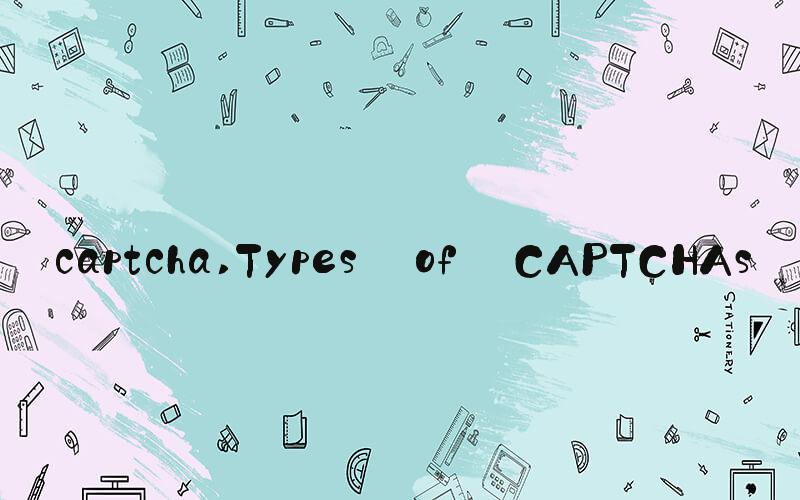AI答案
 What is a CAPTCHA?
What is a CAPTCHA?CAPTCHA stands for Completely Automated Public Turing test to tell Computers and Humans Apart. It is essentially a challenge-response test designed to differentiate between human users and bots. The test typically involves distorted and unreadable characters that a human must decipher and enter correctly to prove that they are not a robot.
Initially, CAPTCHAs were used to prevent automated spam and abusive practices on websites, but they have now become a common security mechanism in a variety of online applications such as account registration, online polls, and password resets.
Types of CAPTCHAsOver the years, numerous types of CAPTCHAs have been developed, each with its own level of security and usability. Here are a few of the most common types:
Image-based CAPTCHAsThese are the most widely used CAPTCHAs and require the user to decipher a sequence of distorted images. The challenge can range from selecting all the images with a specific object to identifying specific letters or numbers within the image.
Audio-based CAPTCHAsAudio-based CAPTCHAs are designed for users who may have difficulty reading distorted text or have visual impairments. The challenges here involve listening to an audio clip and entering the spoken words or numbers into the system.
Mathematical-based CAPTCHAsThese CAPTCHAs require users to solve simple mathematical problems, such as addition or subtraction, before being granted access. These challenges are relatively straightforward for humans to solve but can prove difficult for bots.
Are CAPTCHAs Effective?CAPTCHAs have been used for years as a security measure to protect online applications and services from automated bots. However, recent studies show that CAPTCHAs are not as effective as they once were.
Bots can now easily bypass image and mathematical based CAPTCHAs using machine learning and computer vision techniques. Audio-based CAPTCHAs, on the other hand, suffer from low usability, are not accessible to all users, and can be challenging to solve for non-native speakers or those with hearing impairments.
Alternatives to CAPTCHAsGiven the limitations of CAPTCHAs, developers are currently exploring various alternatives:
Biometric-based authenticationBiometric authentication involves using biometric identifiers such as fingerprints or facial recognition to verify human users. This approach offers a higher level of security and is more user-friendly than traditional CAPTCHAs.
Behavioral-based authenticationBehavioral-based authentication involves analyzing user behavior and patterns to determine if they are human or a bot. This approach is highly effective against sophisticated bots and can be a better alternative to CAPTCHAs.
Invisible CAPTCHAsInvisible CAPTCHAs are designed to be completely invisible to the user by analyzing various aspects of the user's interaction with the website to determine whether they are human or a bot.
ConclusionCAPTCHAs are a popular security mechanism used to protect online applications and services from automated bots. However, as bots become more sophisticated, traditional CAPTCHAs are becoming less reliable.
Developers are now exploring alternatives such as biometric-based authentication, behavioral-based authentication, and invisible CAPTCHAs to improve security and user experience. As technology advances, it is only a matter of time until we see new solutions emerge that make traditional CAPTCHAs obsolete.
